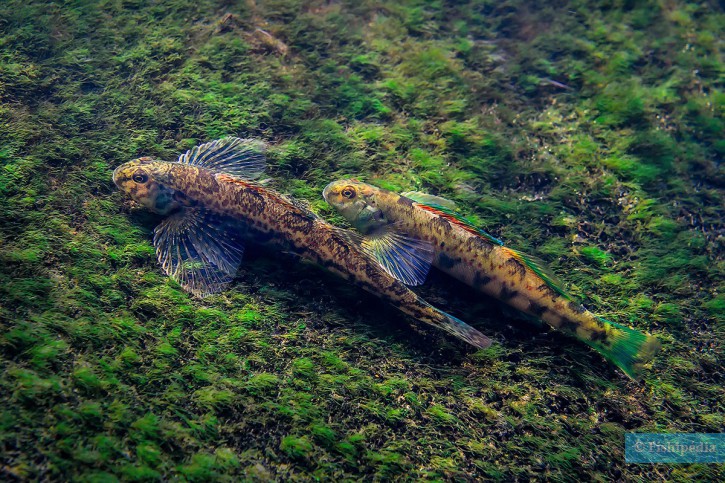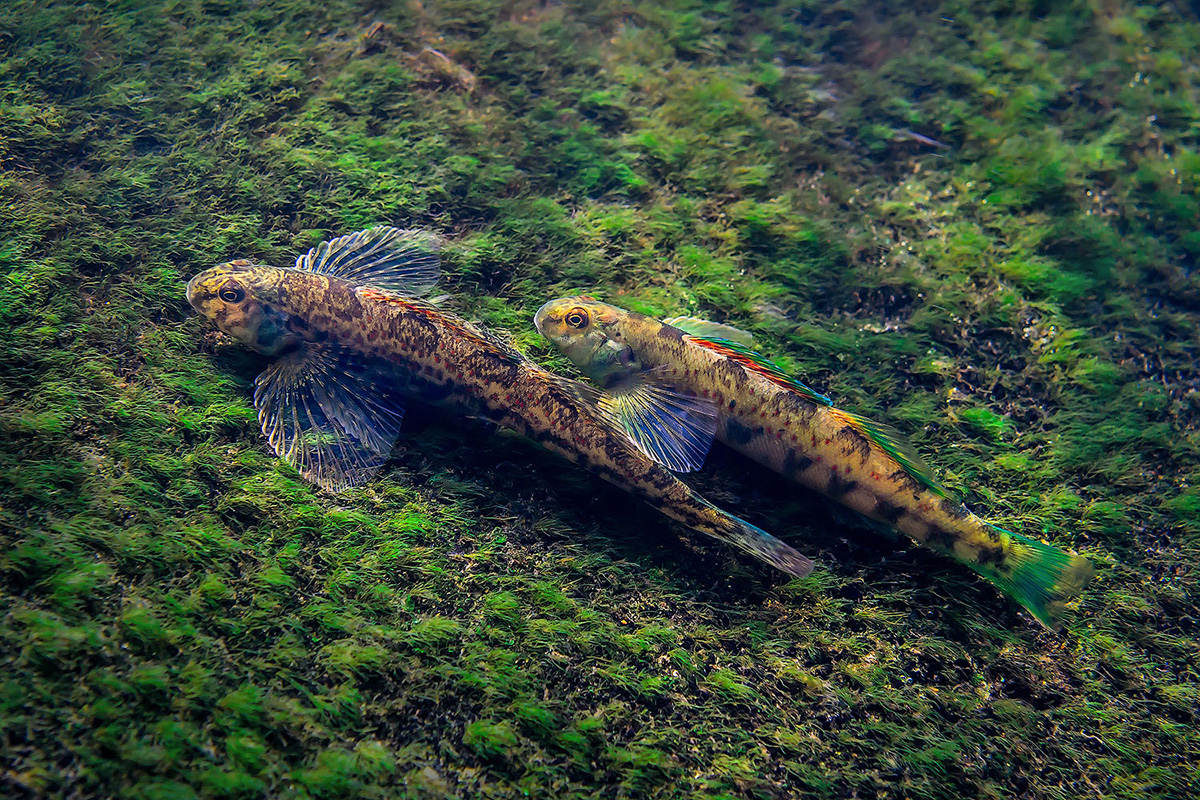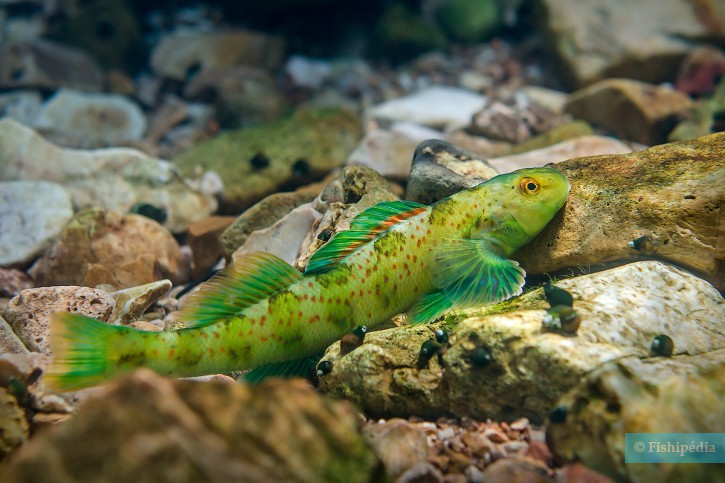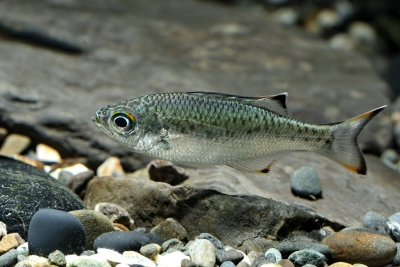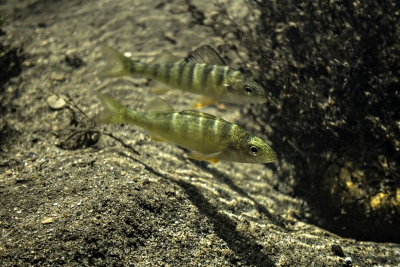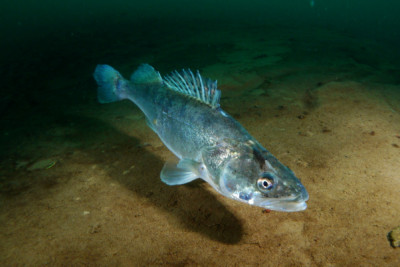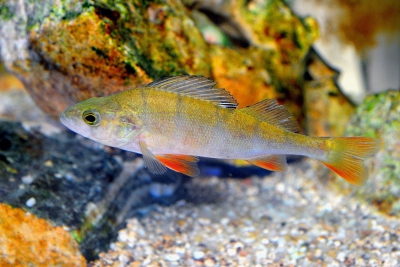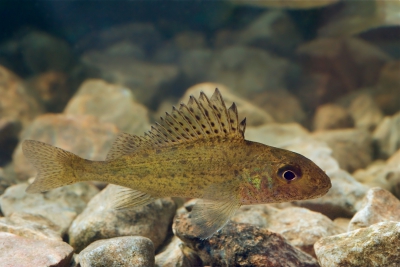Introduction
Etheostoma blennioides, more commonly known as the greenside darter, is a small cold water predator native to the eastern United States, from northern Georgia to Canada.
Who is it?
Morphology
-
Average size5 cm
-
Maximum size8 cm
-
Longevity5 year
-
Patterncircle pattern
-
Average size5 cm
-
Maximum size8 cm
-
Longevity5 year
-
Patterncircle pattern
How to recognize This fish ?
Individuals are beige to fluorescent green in color, with red spots.
Sexual dimorphism
Males have brighter colors than females.
Behaviour & Life cycle
-
dietcarnivorous
-
Sociabilityliving as a couple or alone
-
territorialYes
-
Way of livingdiurnal
The greenside darter is primarily a carnivore, feeding on midge larvae and micro-crustaceans. Adults also consume flies and mayflies, as well as various types of immature aquatic insects.
Males are territorial, especially during the breeding season where they can be aggressive in courting a female.
Reproduction
-
Reproductionovipare qui enfouit ses œufs
The greenside darter is an oviparous fish that buries its eggs. When the female is ready to spawn, she buries herself slightly and the male releases his sperm. Fertilization occurs in the substrate.
Once the eggs are laid, the parents abandon their offspring.
Harmless species
This species does not represent any particular threats to humans when encountered in its natural environment.
Origin and distribution
Geographic distribution & Conservation
This species is found from the Great Lakes region to the Mississippi River. It is present in a large part of the eastern United States.
Conservation status of populations (IUCN)
What is its habitat?
Natural environment characteristics
-
Temperature4 - 18 °C
-
FlowStrong
Biotope presentation
The species particularly prefers clear, fast-flowing waters and rapids.
To go further
Sources & Contributions
Participation & Validation
The Fishipedia team and specialist contributors are committed to providing high-quality content. However, although the information comes from scientific sources or testimonials from specialists, the cards may contain inaccuracies.
Translation
Translation done with the valuable contribution of our translators, who make this information available to a wider audience. We sincerely thank them for their commitment.
